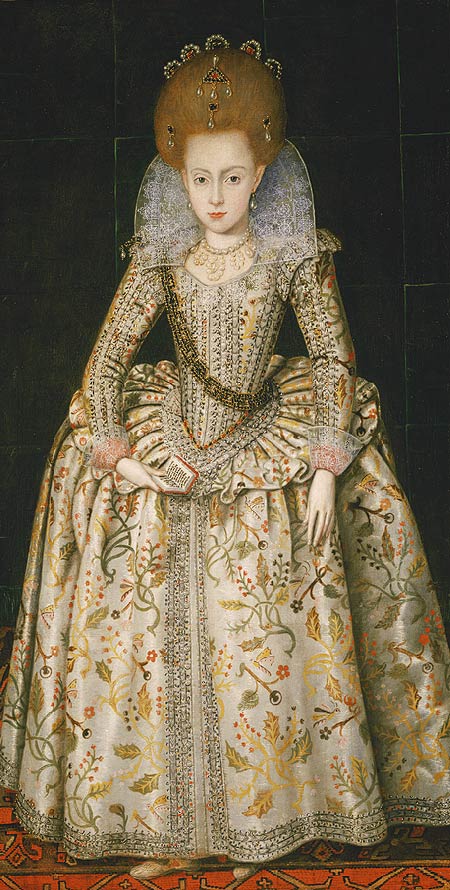
This blog is part of series linked to our exhibition, More than Pretty, which looks at body decoration of girls throughout history. Check out the exhibition here.
Welcome to Stuart Britain! Famous for England and Scotland being ruled by one King for the first time and the Civil War, but not for makeup and washing. This is first time when it was fashionable for boys and girls to wear makeup. For girls, the ideal look was fair with a round or oval shaped face, a high forehead, large dark eyes, a well-portioned nose, a small mouth with full lips, white clean teeth of equal size, a small double chin, and dimples on each cheek as well as the chin. Hair should be thick, long, curly, and kept clean. Brunettes were preferred but this wasn’t important. Phew what a list! Unfortunately this list wasn’t easy to achieve in a time when there was a lack of nutrition in the general population. The desired luxurious hair was not achievable for most girls so wigs became very popular. Usually made from human hair (if you were wealthy) or horse hair (if poorer), the size and height of your wig showed your social status (bigger = wealthier). Wig or not, girls would wash their hair with lye soap and water, pulling it into a pony tail during the day. If you owned a wig you would then put this on. Wigs were powdered to keep them looking fresh. The powder was usually white but could also be pastel colours like blue, pink and lavender.
Skin was the next step. Everyone wanted soft skin so girls would have used urine to do this and keep their complexion clear. Lucky this trend didn’t leave the Stuart period! As with other periods in history, pale skin was fashionable as it showed you didn’t have to work outside. But if you did work outside and had a tan, you could make a cream to cover it. Creams and powders were usually made from white chalk or lead mixed with egg white and vinegar. Sometimes ground bones or pearls were used if they were easier to source. Pink and flesh coloured powders have been found, much like modern foundation with its variety of skin tones. The cream set like paint on your face so if you laughed it was easy to crack your makeup. Luckily eyes were much lower maintenance. Eyebrows were left natural but groomed to look tidy. If any eyeshadow was used, the colour would be brown or natural tones so it didn’t look obvious. Cerise powder was applied to appear like a natural flush in the cheeks rather than obvious added colour. Cerise powder was made from white lead (toxic) with red colour added from rouge. In this period, rouge could be made from boiled crabs, cochineal, ochre, vermillion (toxic) or tinctures made from brazil wood, cardamom, carnation, cloves, or sandalwood. As with the Tudors, all these toxic ingredients scarred skin, ruining a clear complexion. As a result beauty marks became popular, usually cut into shapes like stars, diamonds and crescent moons. To finish off the look, colour was added to the lips with cochineal or fruit juice.
Join us for our next blog on girls in the Georgian period.
-Monique Brough
Curator
Girl Museum Inc.
For more information, check out
https://www.rmg.co.uk/stories/topics/beauty-stuart-age
http://madameisistoilette.blogspot.com/2013/10/a-beautiful-visage-17th-century-female.html

I enjoyed this reading this very much. So many interesting facts that were new to me. I look forward to your future articles.